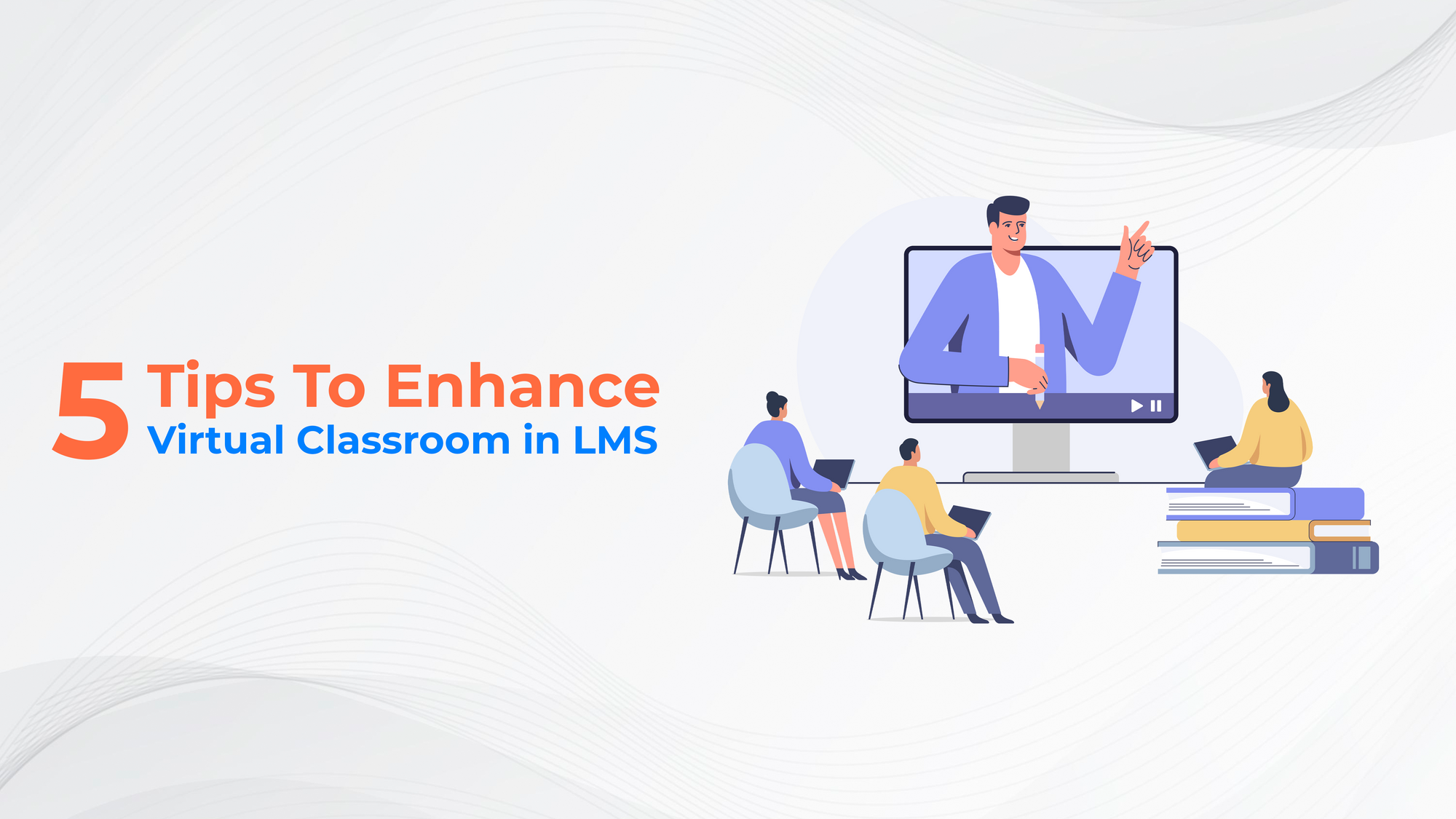5 Tips to Enhance Virtual Classroom in LMS

Virtual Classroom in LMS
Virtual classrooms have become increasingly popular for educational purposes. A virtual classroom is an online learning environment where students and instructors can interact in real-time to facilitate effective teaching and learning. Virtual classrooms in Learning Management Systems (LMS) are a popular choice for delivering education and training remotely. By leveraging the powerful features of LMS, educators have been able to create immersive and engaging learning experiences for their students.
Tip 1: Personalize the Experience
When it comes to ensuring success in a virtual classroom, personalization can make all the difference. It's essential for educators to create an environment that allows students to learn and interact with one another in a way that feels comfortable.
Get to know each student. Taking time to get to know each student can help foster an atmosphere of respect and trust—it also helps ensure their comfort level during class discussions and activities. Try setting aside 10 minutes at the start of each class session for introductions, as well as encouraging students to share their goals or interests outside of school.
Tip 2: Utilize Collaborative Tools
Engaging in an online learning environment can be intimidating and even overwhelming for students. One of the most important tips to make sure your virtual classroom is a success is to utilize collaborative tools. These tools can help foster conversation and provide a more interactive experience for everyone involved. Collaborative tools like video conferencing, online forums, and shared documents are incredibly useful in virtual classrooms.
Video conferencing allows students to engage with each other face-to-face, enabling them to build relationships with their peers even when they’re not physically present. Online forums also let students discuss topics related to the class or ask questions they might have while engaging in meaningful conversations with classmates. Lastly, shared documents allow teachers to easily create assignments and share resources with the entire class quickly and efficiently.
Tip 3: Incorporate Interactivity
Interactivity is key to successful virtual classroom activities. Incorporating interactive elements into your online lessons can make them more engaging for students and increase student engagement, comprehension, and retention of the material. When planning virtual classroom activities, it’s important to think of ways you can use interactivity to promote collaboration and discussion among students.
Consider using online tools such as video conferencing or chatrooms that allow students to exchange ideas in real time. You could also incorporate polls where learners can vote on a topic or answer quiz questions about the lesson content. Providing opportunities for students to give feedback on the course content through surveys or comment boxes is another great way of incorporating interactivity into your virtual classroom environment.
Tip 4: Focus on Communication
Having a successful virtual classroom environment starts with strong communication between teachers and students. As educators, it’s important to focus on the basics of communication to ensure the success of the learning experience for students. Communication is key in any classroom environment, but especially in a virtual space where non-verbal cues are removed from the equation.
To enhance learning potential, teachers should make sure that everyone is heard and can be understood during class discussions or lectures. This includes making sure audio and video capabilities are functioning properly before each lesson begins so that everyone can hear one another clearly and ensuring any technical issues are quickly resolved if they arise during class time. Additionally, providing clear expectations for student participation can help ensure that conversations flow smoothly throughout each session.
Tip 5: Engage with Learners
The need for successful virtual classrooms is becoming increasingly important due to the pandemic. As a teacher, it is vital to engage learners in order to maximize learning success and performance. Engaging with Learners is one of the most important ways to enhance the virtual classroom experience through engaging with learners. This can be done by assigning meaningful tasks, providing feedback on completed assignments, and interacting directly with students in real time through video conferencing or other online tools.
The more you interact with your students and get them involved in their own learning process, the better they will understand the material being taught. Additionally, make sure that you are accessible and responsive when students have questions or concerns related to course materials or assignments; this will ensure that everyone remains engaged throughout the session.
Conclusion
BrainCert Virtual Classroom provides an effective and convenient way to learn from the comfort of one’s own home. BrainCert UTP has an in-built, web-based virtual classroom that does not require third-party software or an API. Through its easy-to-use tools, it allows instructors to create engaging content and lessons that can be accessed from any device, in any location. With its user-friendly interface and wide range of features, Virtual Classroom helps to foster a rewarding learning environment for both instructors and students alike.
